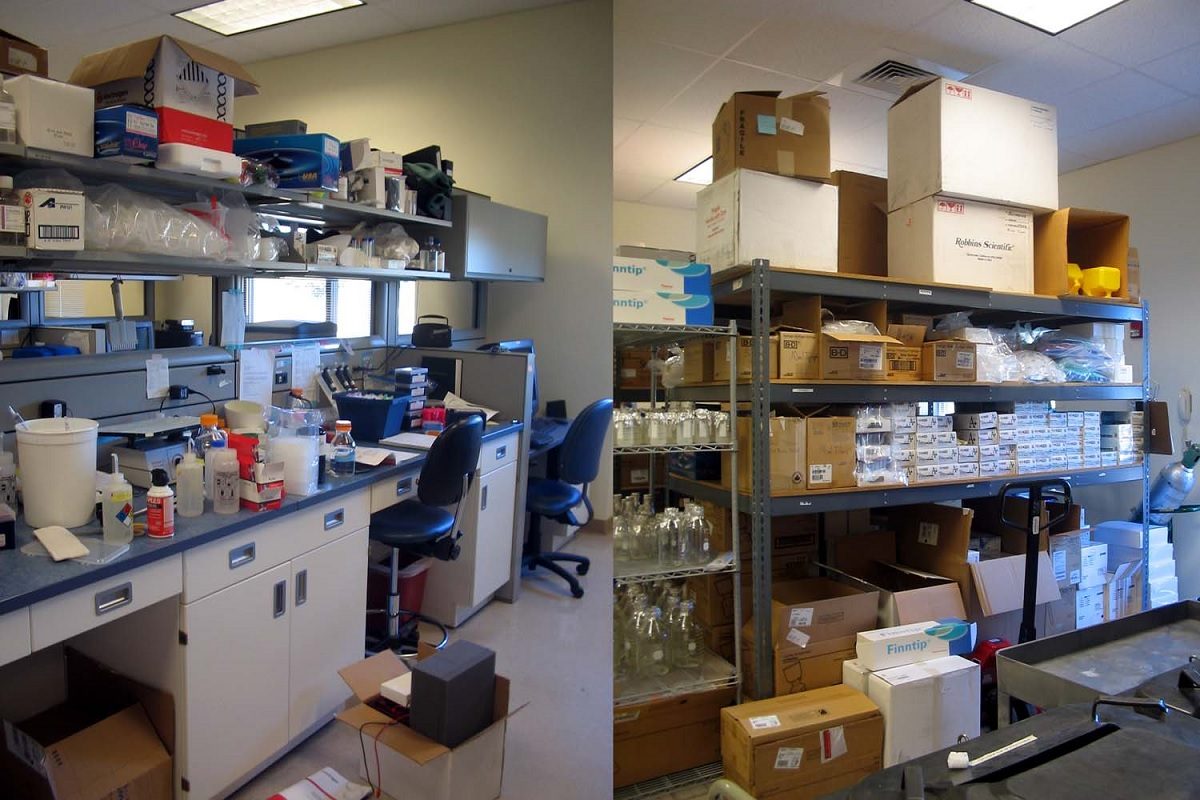I came across a few photos capturing the “before” stage of a Lean Lab initiative I led more than a dozen years ago. It was a valuable learning experience. Today, many opportunities still exist. Have you implemented Lean in an R&D or laboratory environment? What benefits did you see?
While Lean implementation is often associated with manufacturing and other process-oriented environments, I have seen many benefits in introducing Lean to R&D. Many benefits are direct, measurable, and visible. For example,
- Increased capacity and productivity
- Reduced waste in materials and supplies
- Higher utilization of shared equipment and facility
- Less wasted time searching for what is needed
- More reliable, reproducible scientific results
- Less downtime and waiting
- Improved safety and compliance
Through the years of helping organizations improve R&D productivity as well as managing my own R&D groups, I developed more appreciation on the less tangible and less visible benefit of Lean. That is, its impact on an organization’s culture and capability.
What happens in an organization taking up a Lean initiative is that it brings everyone together to solve problems as a team, often for the first time. In many organizations, we often see problems from our own vantage points and perceive the causes as something coming from the outside. Participation in Lean helps break down the silos, surface the root causes, and connect the people.
The end-to-end value stream mapping or simply process mapping helps us see the big picture and relations with others. It helps us understand what others do and why they do what they do.
The simple identification of 7 types of waste around us is enlightening as how much time and resources we are wasting every day without much awareness. It’s energizing when we eliminate unnecessary activities and free up time to accomplish more important things.
Visual management and 5S (sort, simplify, shine, standardize, sustain) not only help organize the content and flow of the work but also establish a new norm of team communication and community.
Five-whys challenges our assumptions about the real cause of a problem. It focuses the discussion on the system or process, not the people. The results are collaborative problem-solving and more innovative and sustainable solutions.
The list goes on and on.
If you are looking for a mechanism to help develop your organization, consider the many hidden benefits of Lean.
- Develop ownership and accountability
- Make problems, risks, and opportunities visible
- Engage people in continuous improvement
- Simplify and improve communication
- Facilitate cross-functional teamwork and collaboration
- Increase individual and team’s problem-solving skills
Implementation of Lean is achievable even in non-traditional areas. Thoughtful execution can lead to positive, long-lasting impact on the organization and its people, beyond the quick, measurable results.
